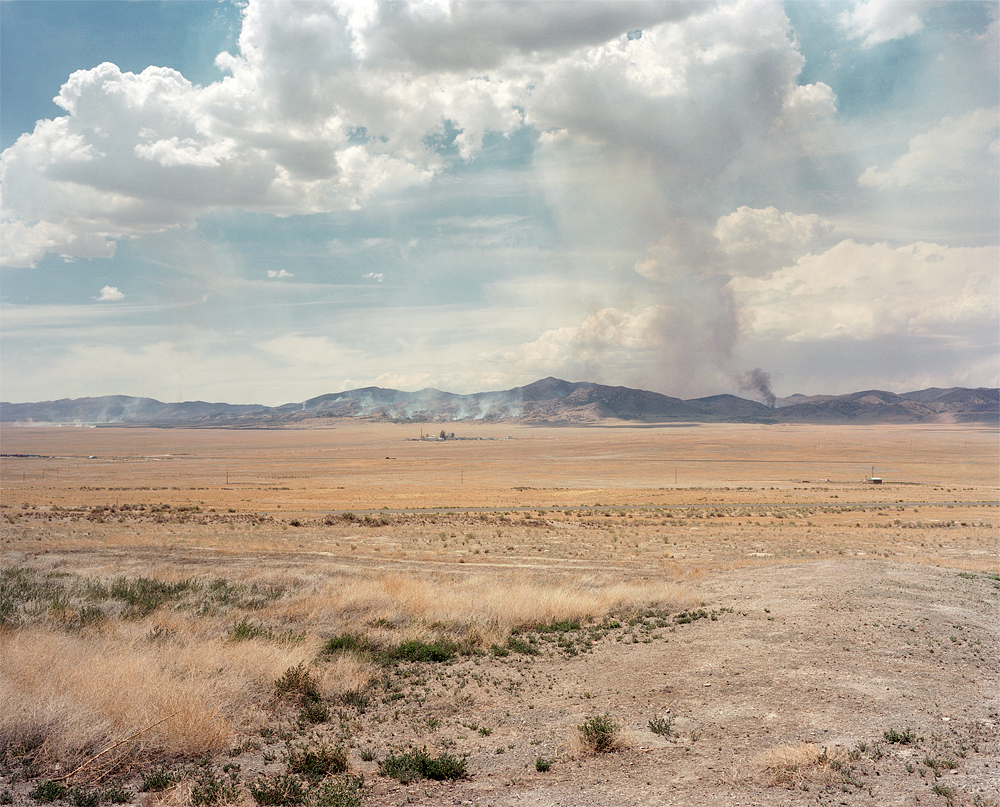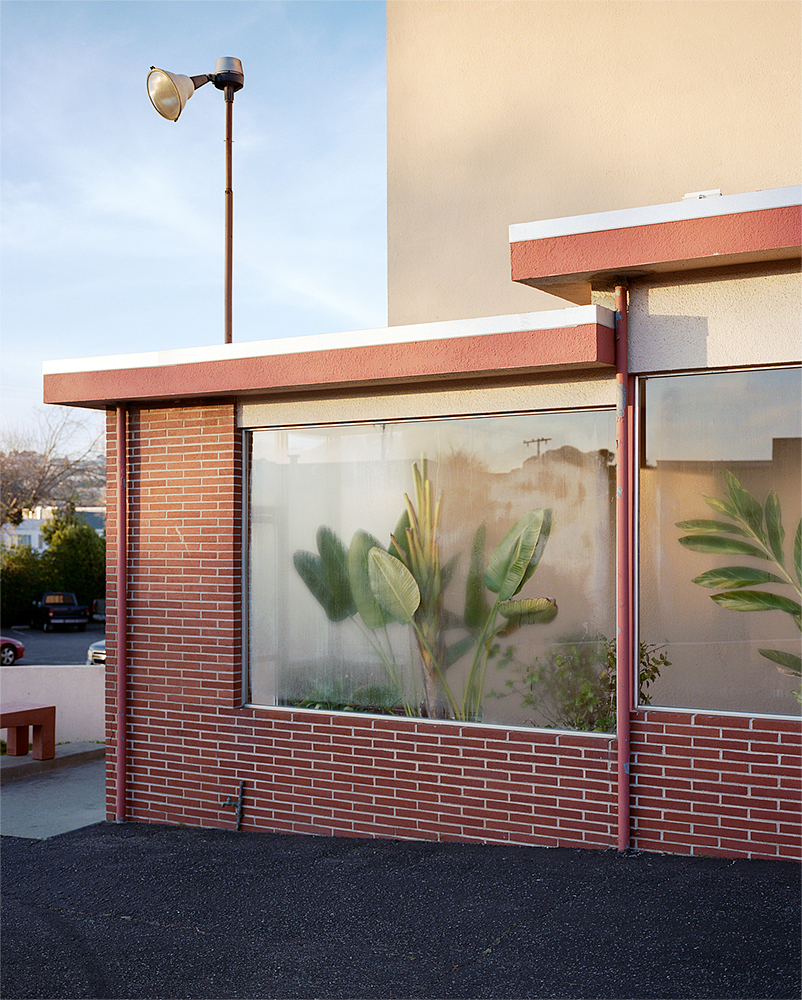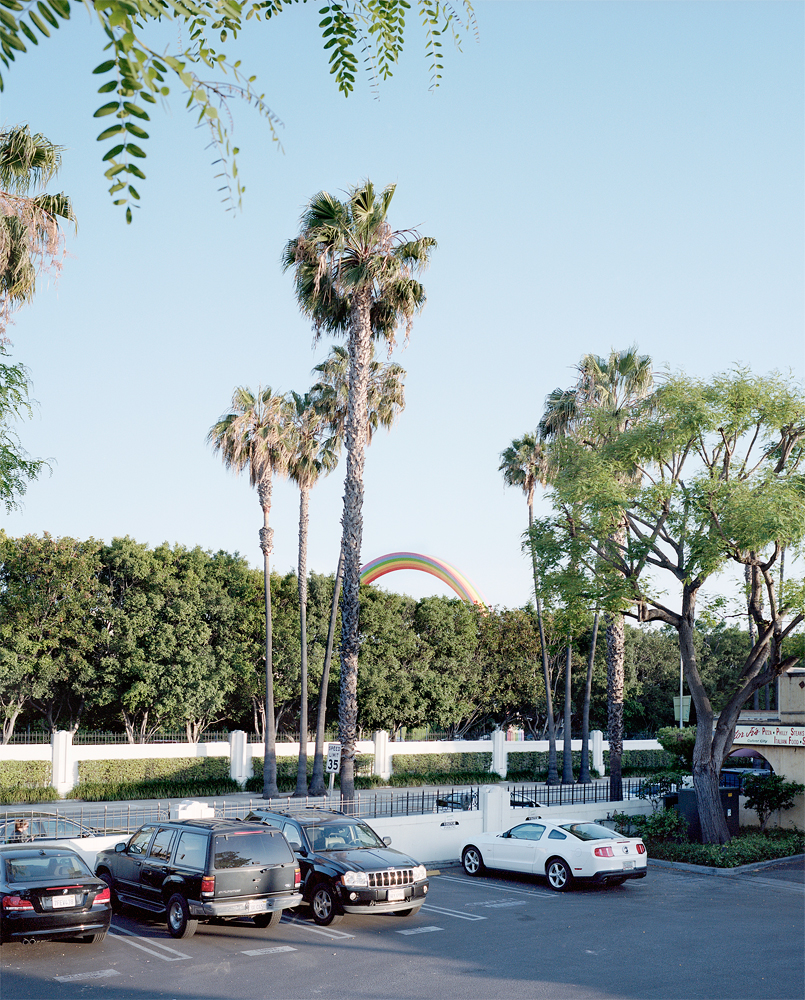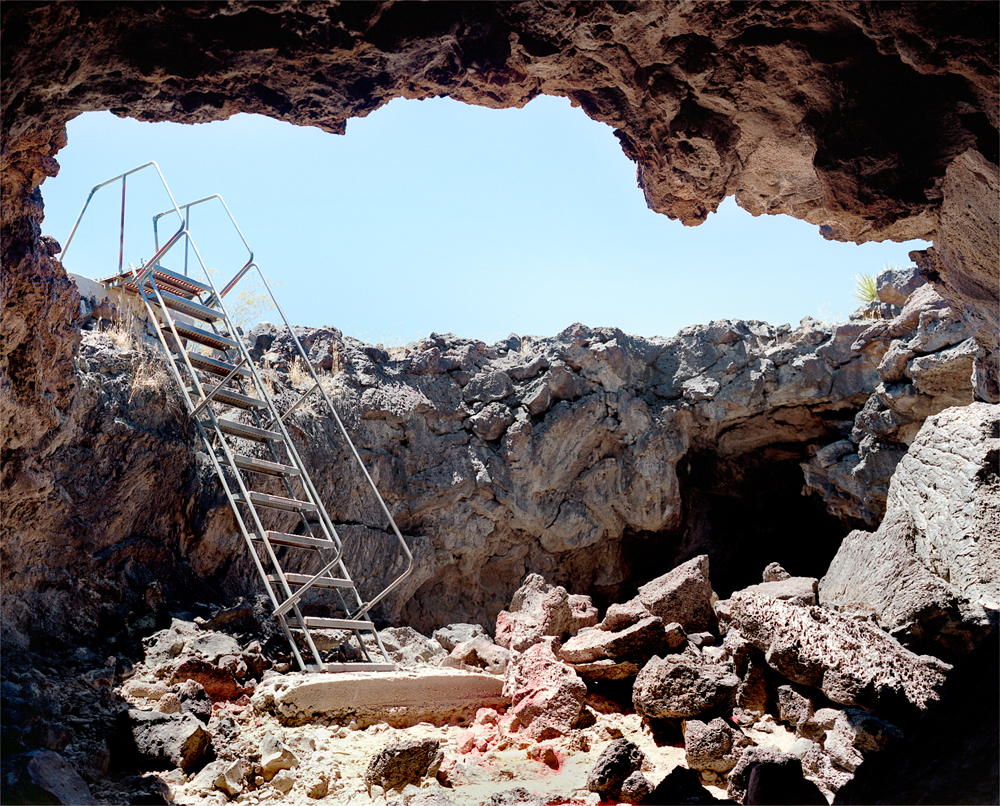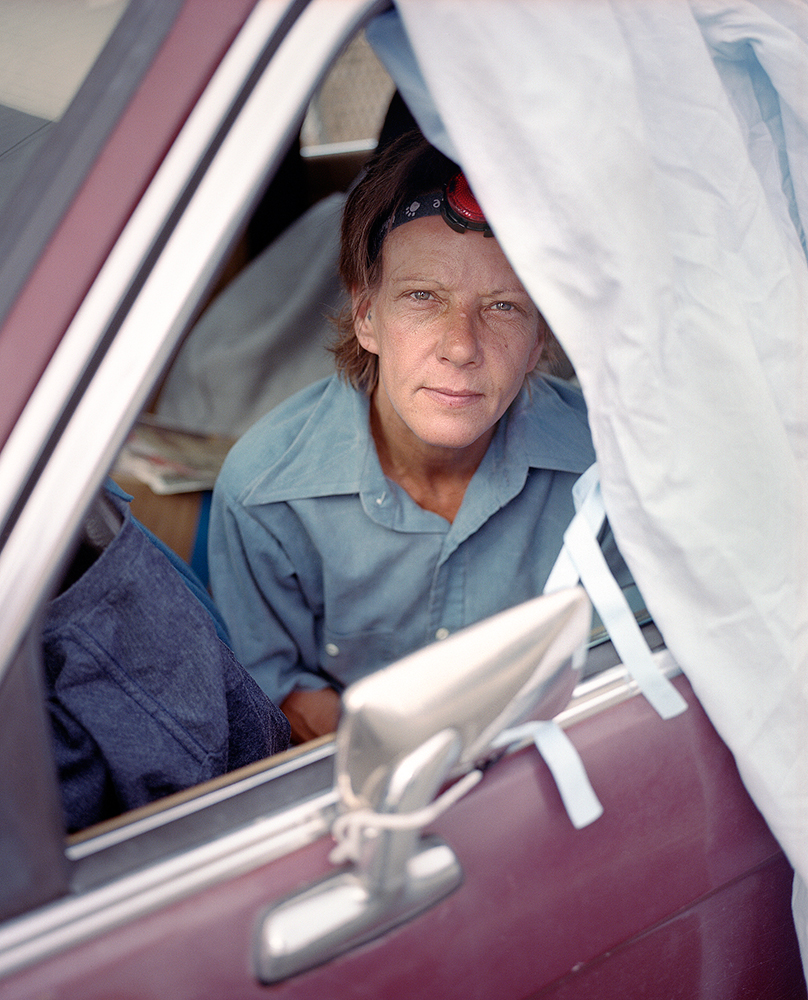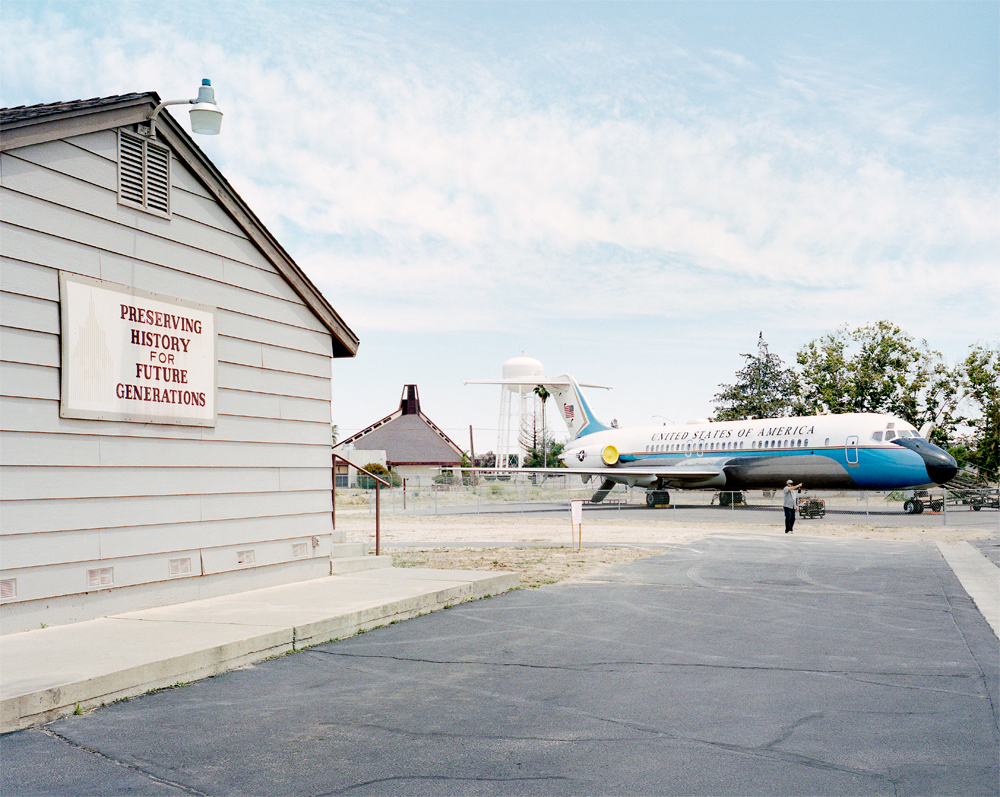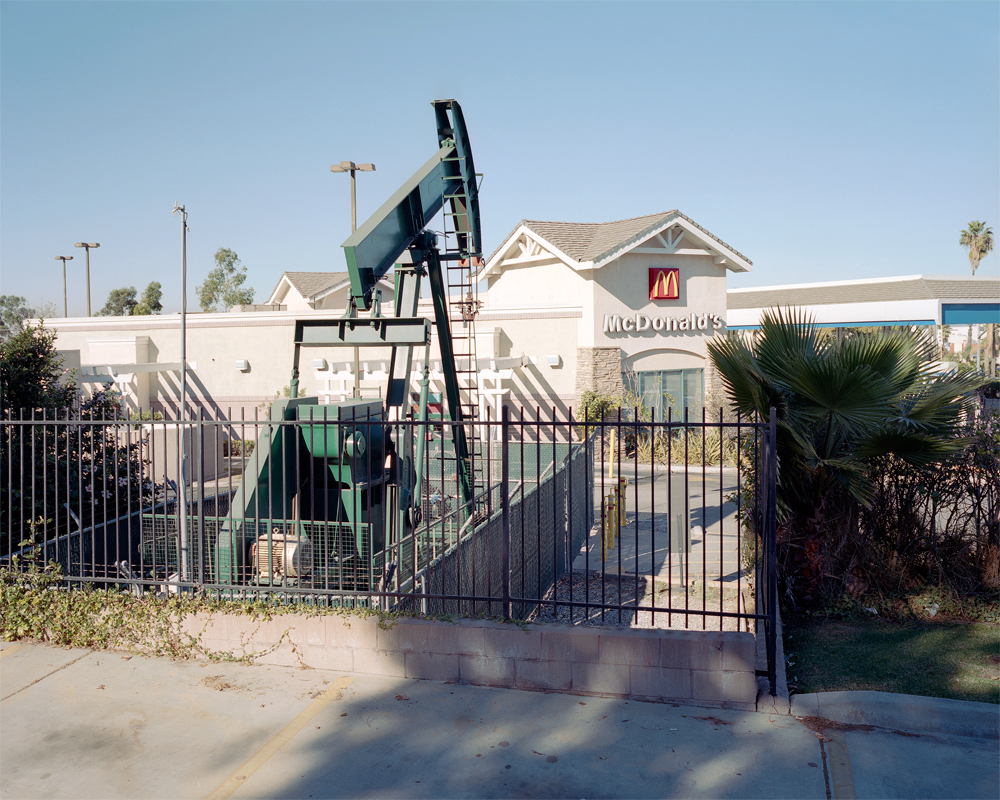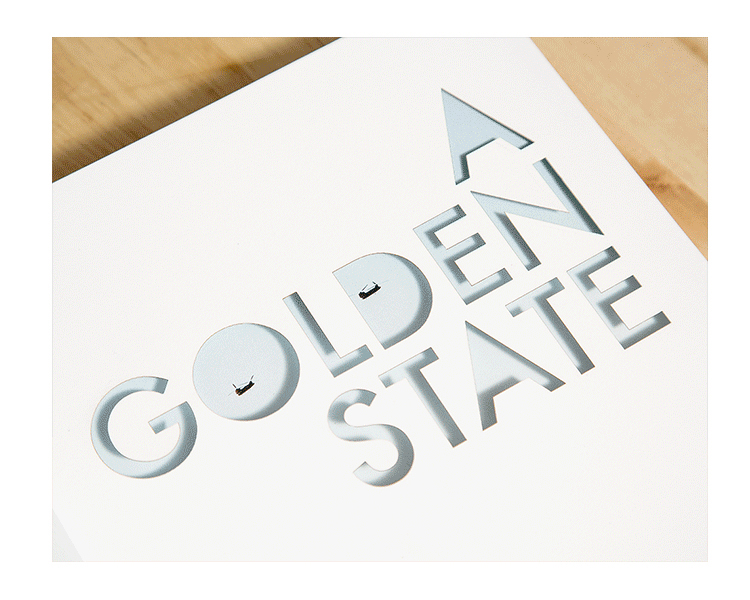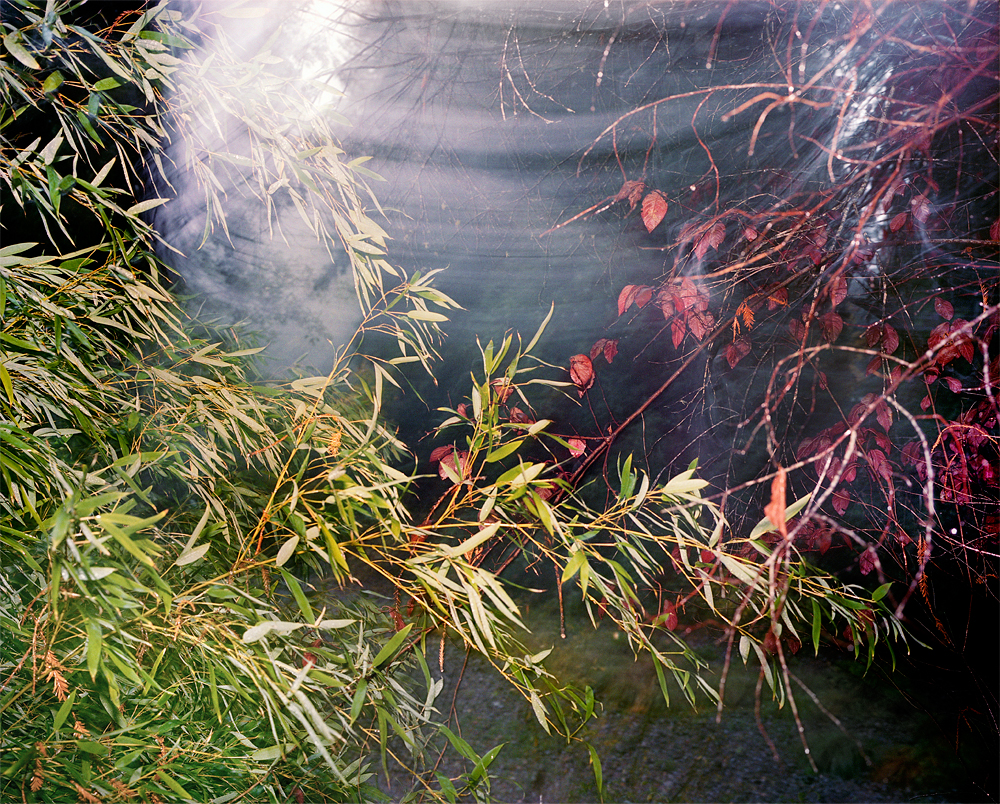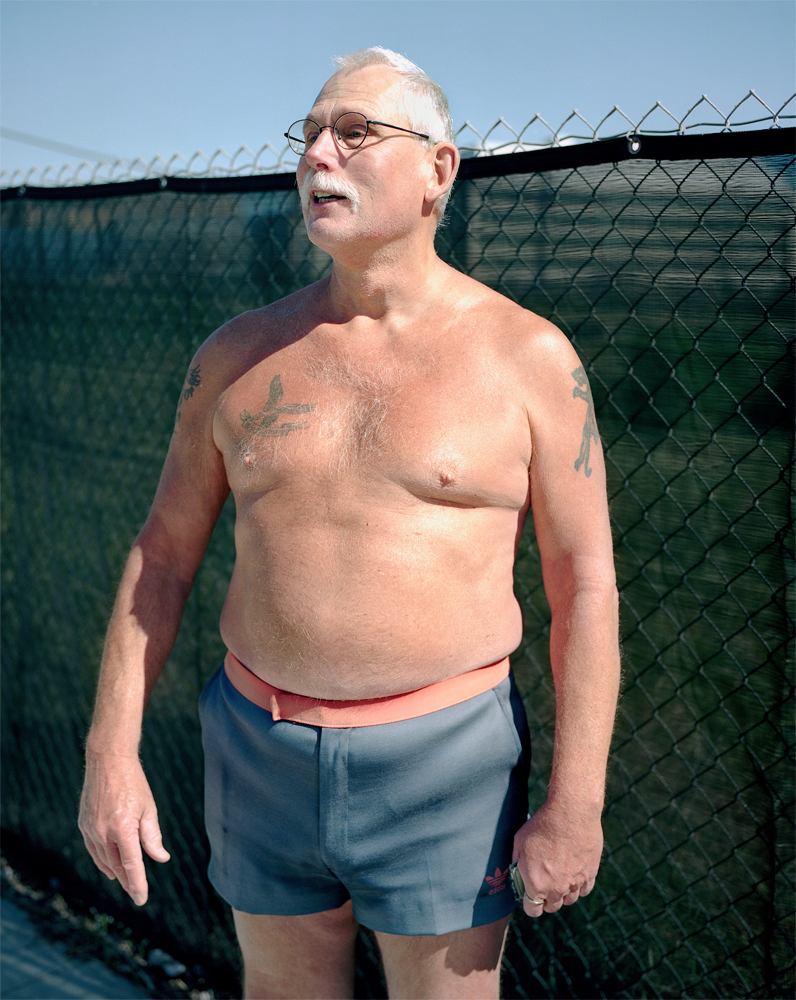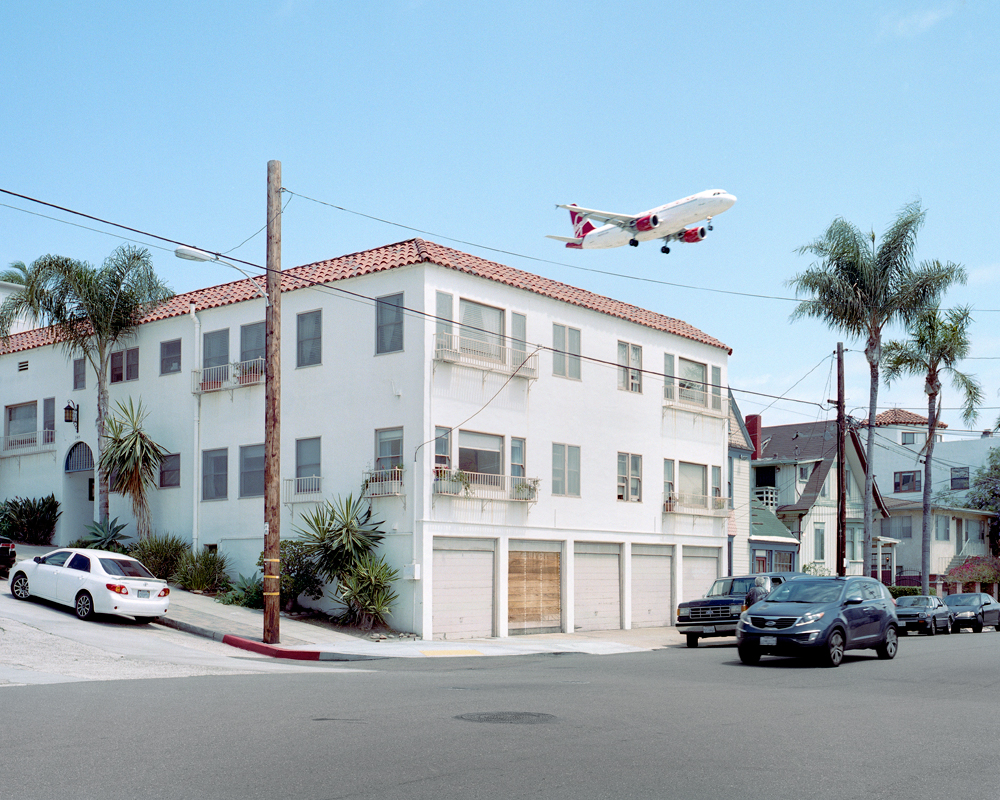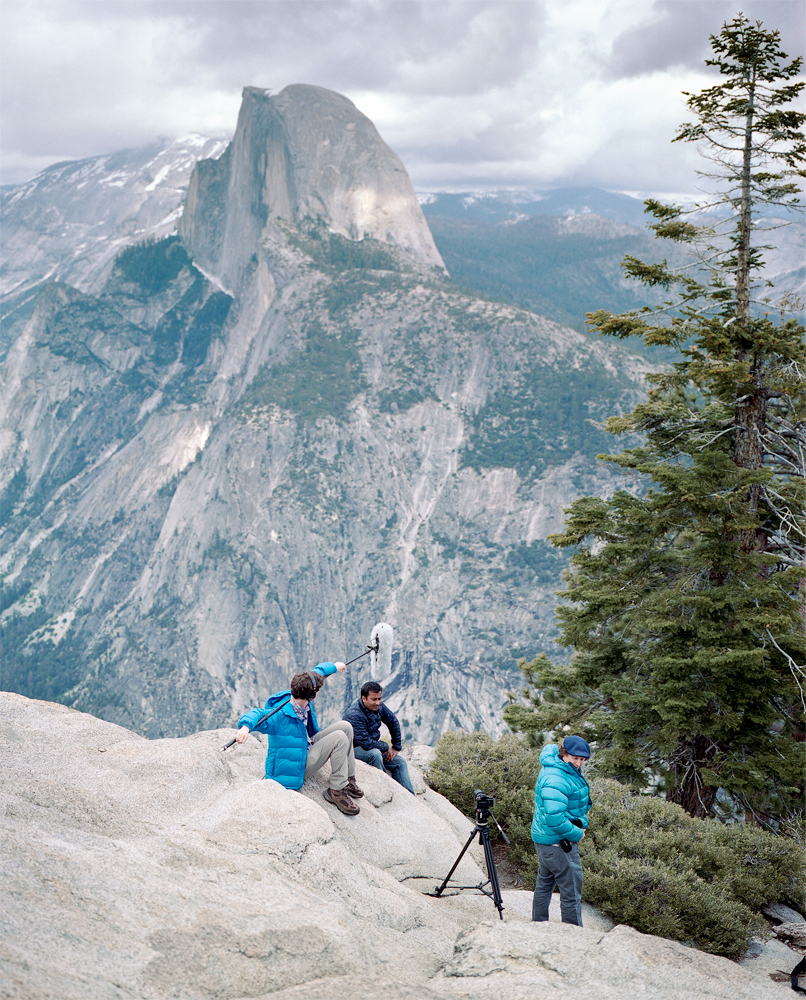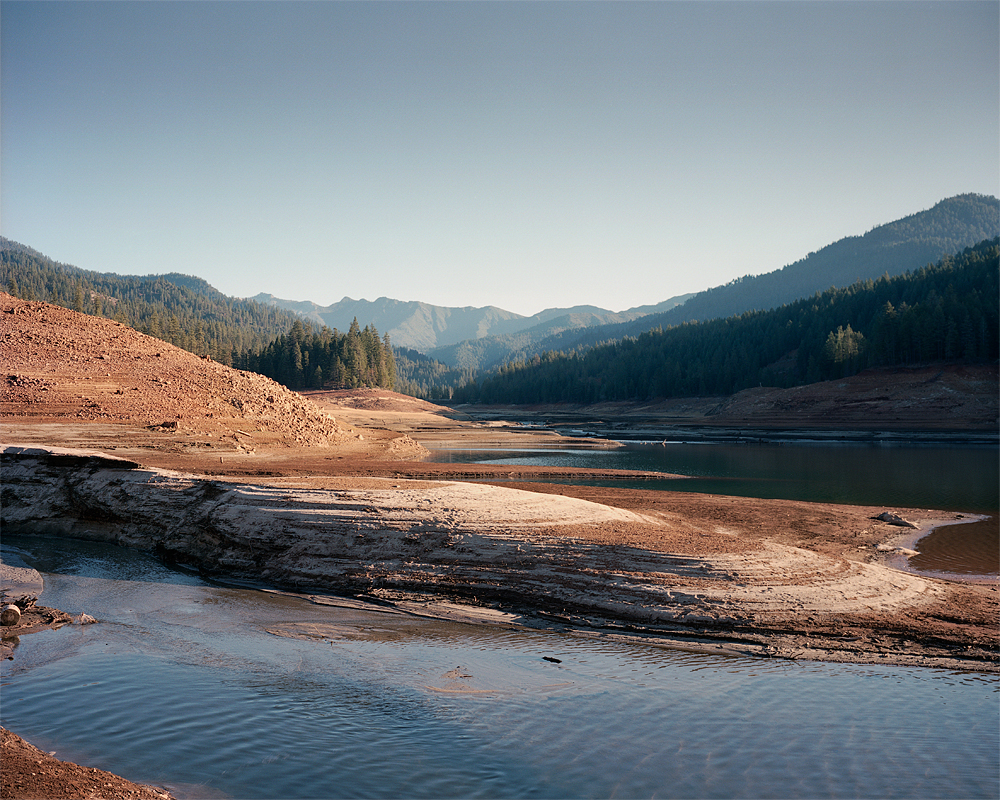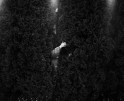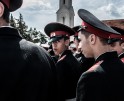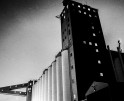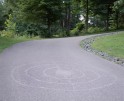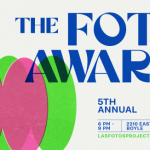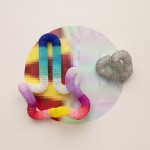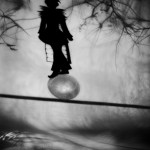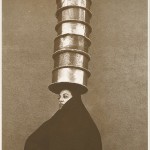Shawn Bush: 2017 LENSCRATCH Student Prize 1st Place Winner:
Marking our fifth year running the Lenscratch Student Prize, myself, Aline Smithson, and Sarah Stankey continue to be excited about the quality of work flooding in from all different sectors of educational institutions, both nationally and internationally. Over the next week, we share seven photographers that stood out as visionaries and storytellers, who are guaranteed for further future success.
Shawn Bush, a second year MFA candidate at the Rhode Island School of Design, received 1st place in the 2017 Lenscratch Student Award. Shawn’s body of work, A Golden State, displays strength in its visual narratives, and places perspective onto the viewer as a wayfarer of sorts. Isolating the essence of the West, Shawn’s photographs range from iconic, boundless landscapes that will leave you breathless as ever, to the smirk, the chuckle, the oddities that now define our current Western make-up. In this work we see the adaptation of what exactly the new Western landscape is, one that has already been settled, that was already glamorized, idealized, given an identity, and now sits on the pinnacle of nowness.
Shawn Bush, born 1987, is an artist living and working in Providence, RI. In his work Shawn appropriates tropes of popular culture to construct one-off worlds curated from reality. Focusing on habitual representations controlled by Western structures and institutions, Bush’s photographs challenge the systems that define identity and merit in contemporary America. Bush has been shown in galleries in Chicago, Denver, Boston, San Francisco and Athens, Greece. His debut artist book The Process of Meaning and Worth is the recipient of the Manifest Gold Book award and is included in the Museum of Contemporary Photography’s permanent collection. He most recent artist book A Golden State has been included in the Candella Gallery permanent collection, Fleet Library Special Collections and will be released as a trade edition in 2018.
The Golden State
The Western landscape has captivated the hearts of Americans and non-Americans since it was first settled. The expansive topography that dominates the territory encapsulates the allure that defines core American ideologies. Cinema, habitual media and commercial industries use the seduction of the Western landscape to sell, define and project a merit of social status. In the name of progress, the topography is constantly changing and shedding its layers to suit the conditional needs of humanity. Employing some of the tactics of cinema that have been used to describe the landscape, A Golden State questions the relationship of prescriptive identity to place.
Can you give us an overview of your MFA experience so far? Why RISD?
Going back to school was a tough choice for me. I got married a month before I decided to apply to graduate school. In the 5 years since I had finished my BA I worked in creative fields as a layout designer, product photographer and studio assistant, but none of that felt right. I had thought about pursuing an MFA during that time and decided after four years of dedicated work on A Golden State I was in a place where I felt comfortable walking away and diving into something completely new. It felt somewhat like a now or never moment.
During my last year of living in California, I began to visit galleries in San Francisco that were showing art outside of the medium of photography, which made me interested in the sculptural object and how photography/art can live in space. Looking back at my trajectory and evolution of practice, I can associate my interest in bookmaking to the sculptural object & installation art. Though my interests in creating new work are evolving, bookbinding and producing artist books will continue to be a part of my practice moving forward. It is one of the reasons why I chose to come to the Rhode Island School of Design. I knew that I wanted to make an artist edition of A Golden State while at graduate school, so having the opportunity to hone my bookmaking skills was very important to me.
I felt I needed to try, fail and then try again. Taking that step and giving myself the support and freedom to try new ways of creating was something that was needed for me to grow, not necessarily as just a photographer but as an artist in general. Out of all of the programs I was accepted to, I felt that the Rhode Island School of Design would give me the most independence to continue exploring the concepts I had been working on, as well as investigate new concepts and ways of making. The ability to take classes in every department, the dedicated faculty and the personal studio spaces provide me with the support and structure I was looking for. Most of the other photography programs I was looking at did not provide a studio and without that space it would be very difficult to grow as an artist.
The most important reasons I chose to come to the Rhode Island School of Design has to do with the location, faulty, and student body. Coming to a school that hosts students working within the medium of photography in different ways was important to me. I have an amazing cohort that fulfills that desire and I feel privileged to be surrounded by them. Everyone is making in different ways, which pushes my own work in new and exciting directions. The location of Providence in proximity to New York and Boston and the small size compared to those metropolises was also a factor. Working in a small, easily navigated city means fewer distractions. This allows me to be more dedicated to my work while still maintaining a good life/work balance. Also, the fact that Providence is hours away from anyone I know is conducive to a positive graduate school experience. It forced me to make new friends and become closer with my colleagues.
There are issues with every school and department but I can wholeheartedly say I am happy being here.
I am interested in your desire for failure as a way of growth. Failure is inherent at times for all, though I don’t believe it is inherently desired by all.
I don’t want to come off that I desire or strive to fail. I just recognize that it is a part of my creative process. Without taking a first step and allowing room for failure while creating, it is almost impossible for me to grow as an artist. Understanding the power in failure helps move my work forward, making sure I don’t repeat the steps that caused the piece to be unsuccessful initially. It took years of continual failure with meager successes to understand this. Thankfully, over time I have recognized the value of deorientation in my own process and how it can complicate my work.
In the course of photographing and especially editing/sequencing of A Golden State, I had to fail many, many times. There are at least ten different physical mocks of the book that were made before I fully realized where it could conceptually go. It was a process that I needed plenty of help with. While I was photographing, I would constantly pester my friends and colleagues about how the work was being read.
Once I was done shooting, those colleagues with the addition of RISD faculty, helped make the work successfully understood through the use of curation, sequencing, material and scale.
You mention the cinematic experience as an ideation of the Western landscape. Are you able to specifically pinpoint a cinematic moment that led you to begin making this work?
I would describe it less as a specific moment and more as a built up experience that has been happening since I was young. Being born in the late 80’s, I still remember a time before the Internet was our primary source of intelligence, where the amount of information that was easily accessible was limited to what is produced in mass. Hollywood cinema dominated the Blockbuster and Family Video rental stores, as well as the movie theatres that scattered my hometown. This is the visual language and ideals that were presented to me. California was described to me through mass-produced media like music, advertising, daily news, magazines and most importantly cinema as a utopia within the larger utopia of American culture.
When I first moved to California and began shooting, it was almost purely intrinsic and investigatory. A document of an odd place that I felt I somewhat knew. One image in the book was shot during my U-Haul drive when moving from Chicago to California. I lived in San Francisco for over four years and during the first year I was making images throughout a state that I have not experienced in person but rather through cinema in one form or another. It could literally be a shrub, type of tree, a curb that is painted a specific color or more obvious geographic feature like the towering mountains and vast coastlines that brought me to a point of realization. This is when I began to associate what I was making with cinema in my own work. I realized the images I was creating were using many of the visual descriptors I had been exposed to in American Western cinema. Descriptors like plentiful blue skies, endless mountain ranges, pink sunsets and regional specific light are used to describe time, space and identity.
A Golden State lacks a written narrative component, which allows your audience to travel freely outside of time and place. Why navigate the landscape this way?
I chose to leave text out, as well as make images that reference various decades of Californian representation to suggest that California perpetually exists as a space that has associated identity to place for over a century and a half. The thought of how status is tied to a very physically real, but simultaneously fictional space is what drove me during the process of making the work. This projecting of identity in relation to place has been prolific since the Gold Rush and then was later reinforced by Hollywood’s use of the landscape as a backdrop for America’s idols to stand in front of. The expectation that California is a prestigious place of opportunity is as prevalent now as it was in 1915 when the first film studios were popping up in Hollywood. Think about Google in relation to the Gold Rush and how that movement promised opportunity and wealth. Just explaining to people that I lived in California always brought up at least one question or comment that was an affect of the narrowly defined representation of the state.
A Golden State adopts the language of cinema to create a built up experience that could be considered a visual narrative. Through the use of sequencing, which I can also attribute to cinema as construction of experience, I am able to describe a place that reflects my own experiences and opinions of how California has been represented. In the full sequence you are brought into a world that is beautiful, mysterious and familiar at first. Midway through the sequence the familiarity fades and images seem to be repeating but describe the landscape in a way doesn’t hide the effects of a defined representation. Finally at the end of the book, the viewer is left in a beautifully mysterious place, coming full circle and allowing the viewer to form there own options after going through a journey of discovery.
The book is extremely successful, ruminating in the romance of Western archetypes, and creating a platform that outlines place in detail. Outside of your practice leaving space to always consider the book format, do you think A Golden State would have always existed in this form?
I don’t think it would always exist in that form but think it’s one of the best ways to digest the work. The sequencing and play of scale/space is really important in the way it is read. That can be successfully done in a different environment, though it becomes easily accessible and shared when in book form.
The physicality of the book also allows me to explore the conceptual fabric of the work through material and form. In the artist edition, a golden yellow cloth covers the book and the clamshell case containing it. Only the books cloth is brushed with a pigment that is made from a petrified chunk of Californian oil that came about as a result of the largest accidental oil spill in world history. The initial act of opening the beautiful case to find a dirtied book veneer alludes to the juxtaposition between representation and reality.
What an exciting moment in the book experience when the content begins to mirror the form. Are there other incidences of this?
The title page in the artist edition book uses frames within frames in a similar manner that many of the photographs throughout the book do. A Golden State was laser cut out of the blank title page, leaving the photo on the next page to fill the void. Because of the loss of their counters, the A, D & O have larger cut spaces. Military helicopters act as the counter in the O & D, filling the middle of those letters. Once the page gets flipped it uncovers a full bleed photograph of the beautiful California coastline with its space being disrupted by an unobtainable power.
Thematically there are definitely some unique things happening within the work in relationship to traditional Western exploration. There is the framing of the artificial landscape and the contextualized landscape. There are fewer portraits defining a specific type of person within a said place, and more of a collective development through photographing crowds. Were there specific guidelines, created by yourself for yourself, while making these images?
Knowing what I did not want to photograph more than what I did may be the most directing element. The Western landscape has such a rich visual history that I wanted to play off but not fall directly in line with. Other than that, there were no specific guidelines to photographing when making the work. It manifested as a product of exploration into the identity of the Western landscape. As stated in a previous question, habitual media associates status to place in Western society, specifically California. Finding myself living in the West, I wanted to challenge that association and search for a truer identity.
Photographing both the landscape and people was apart of the equation to test that association. I wanted to focus primarily on the landscape, as it plays such a large and unassuming role in the way class is defined in Western society. Turning my focus to include people came halfway through the project when visiting Yosemite. After watching countless individuals take selfies in front of Half Dome, I realized how important the role of identity plays in the Western landscape and began to photograph groups of people who perpetuate that collective ideal. Around the same time, I started interacting with people that reflected or rejected the tropes of Californian existence. I was interested in the juxtaposition of there own conflicting identities and got much closer to them as a means of translating power.
Were there any photographs not taken that you wish you would have had the time or camera for?
There are plenty of pictures that I wanted to make but never made. At the same time there are plenty of pictures that I wanted to make that I no longer wish to after “finalizing” the work. It can be hard to not give into the aesthetic beauty of the Californian landscape and work purely conceptually when behind a camera. Going forward with the work, my goal is to tie some conceptual ends by re-making a few photos and creating new ones before releasing a larger and more affordable edition. I will be going back at the end of August for a week to shoot and live in my rental car.
Going into your final year of graduate school, what’s next?
I plan on continuing to make my thesis work about male identity and try my hand at teaching during my last year. It has been amazing having the opportunity to work in multiple mediums and I look forward to further understanding how my new & future works can be in dialogue with each other. After school is over, the most important plan I have is continuing to create new work and engage with the arts community. I will also be releasing A Golden State as a trade edition and investigating potential avenues for income.
Posts on Lenscratch may not be reproduced without the permission of the Lenscratch staff and the photographer.
Recommended
-
Zhao Qian: 2017 LENSCRATCH Student Prize Honorable Mention WinnerJuly 16th, 2017
-
Marlena Jablonska: 2017 LENSCRATCH Student Prize Honorable Mention WinnerJuly 15th, 2017
-
Emanuele Amighetti: 2017 LENSCRATCH Student Prize Honorable Mention WinnerJuly 14th, 2017
-
Jordan Gale: 2017 LENSCRATCH Student Prize Honorable Mention WinnerJuly 13th, 2017
-
Evie Metz: LENSCRATCH Student Prize 3rd Place WinnerJuly 12th, 2017

